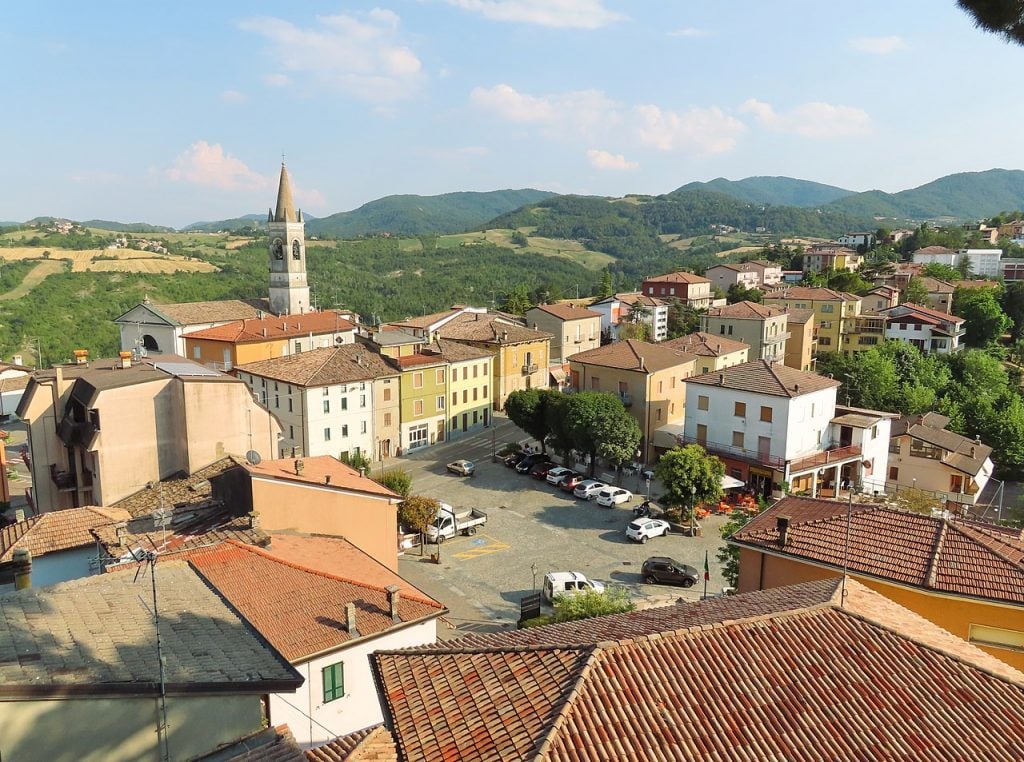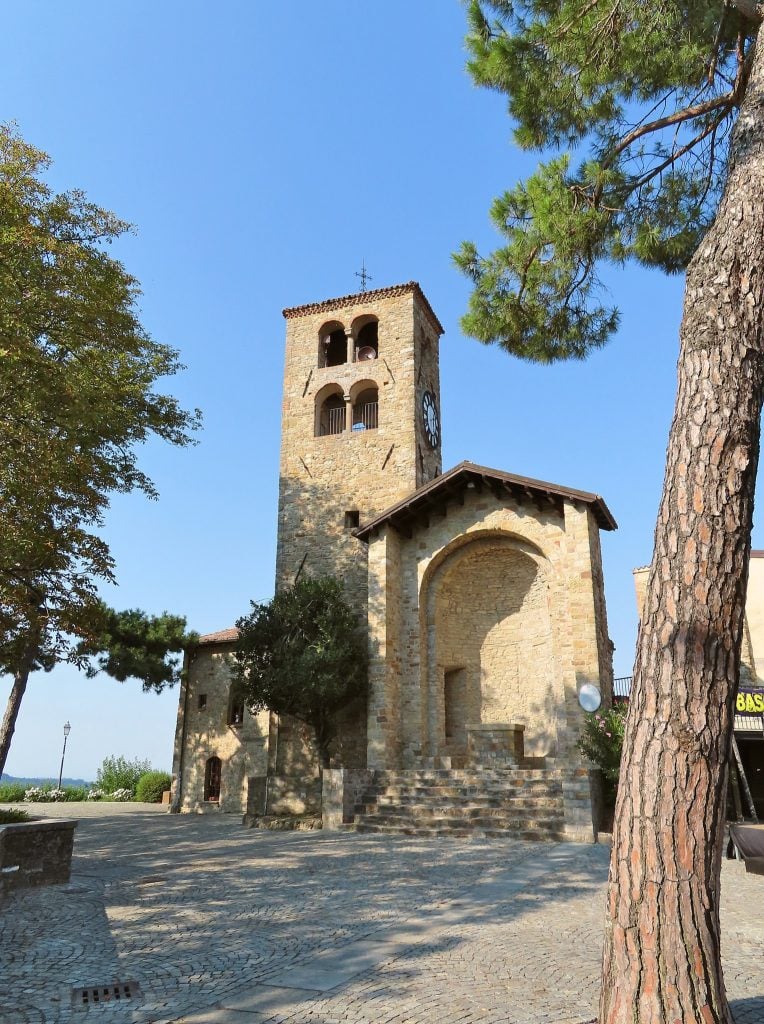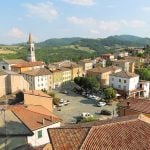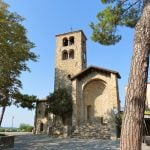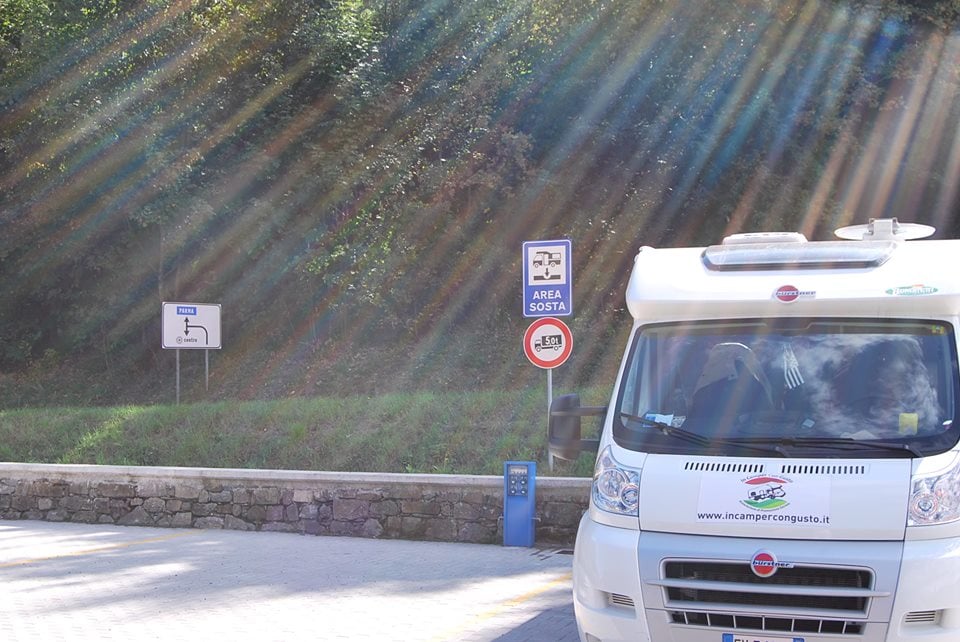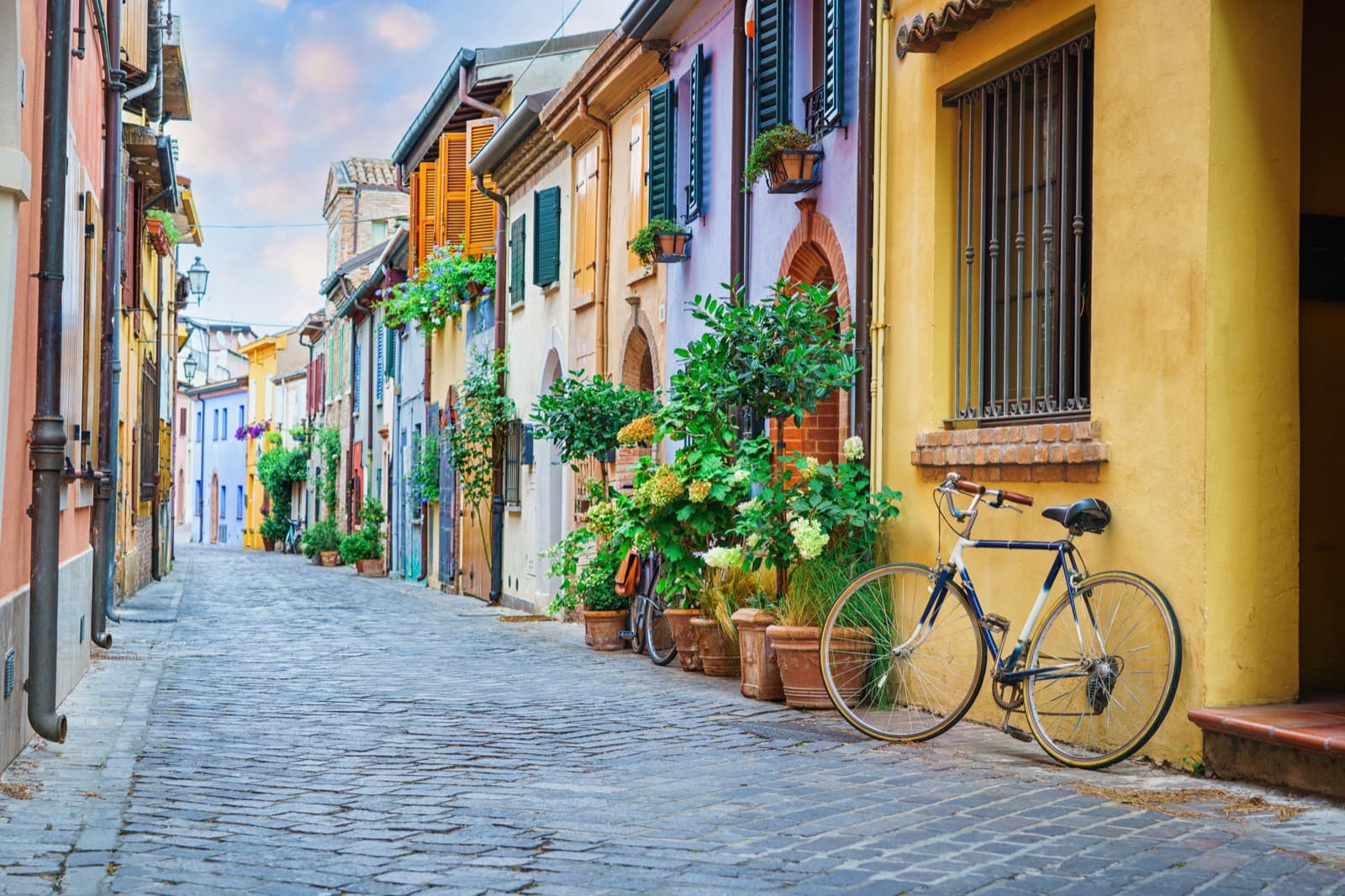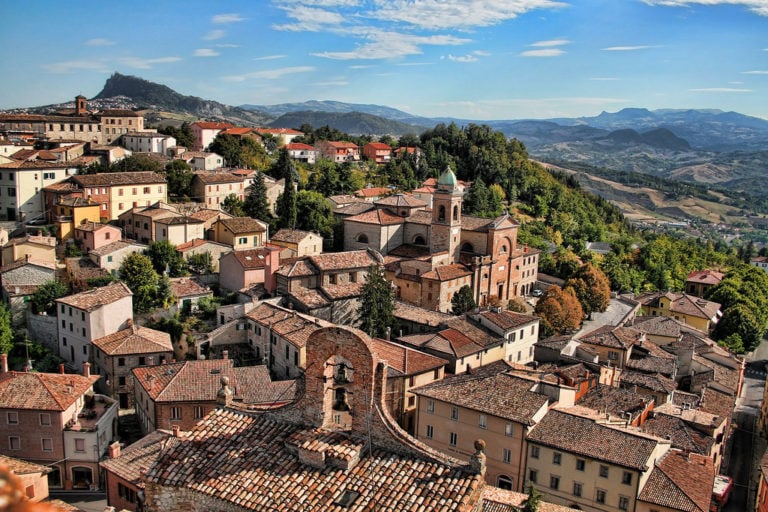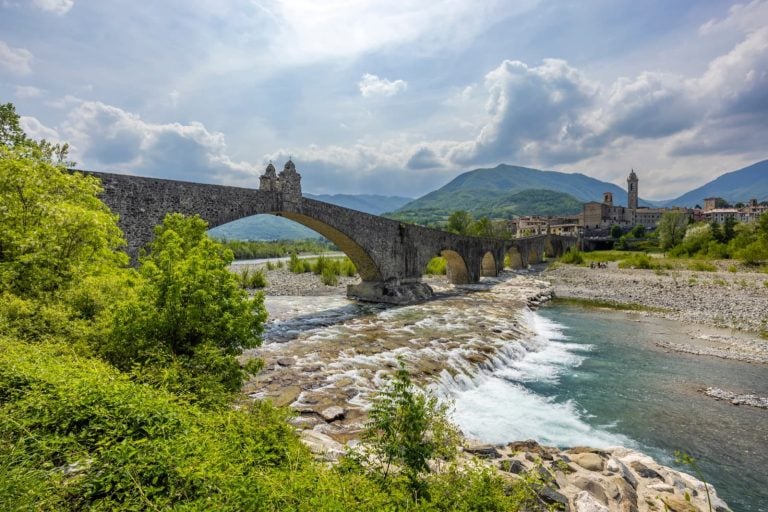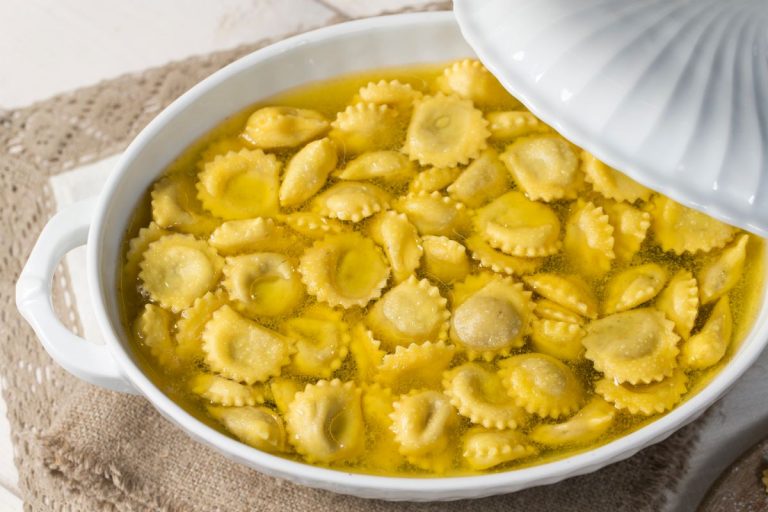
Time
48 h
If you’re reading this article, you’re probably a keen traveller. Here at In Camper con Gusto, we’re delighted to take you on a journey through the Piacenza area – a land of charming villages, castles, vineyards and breathtaking scenery.
This is a circular itinerary, so you can start from any of the stops we’ve highlighted. Our adventure begins in Vigoleno, where we set off from the camper-friendly Parcheggio Rio delle Noci, and that’s where our story begins!
Vigoleno
Recognised by the Touring Club as one of the Borghi più Belli d’Italia and a Bandiera Arancione site, Vigoleno sits on a cliff overlooking the entire Stirone Valley.
There’s plenty to explore in the village, although a simple stroll through its streets is a delight. And don’t miss the stunning views from the castle – a sight to behold!
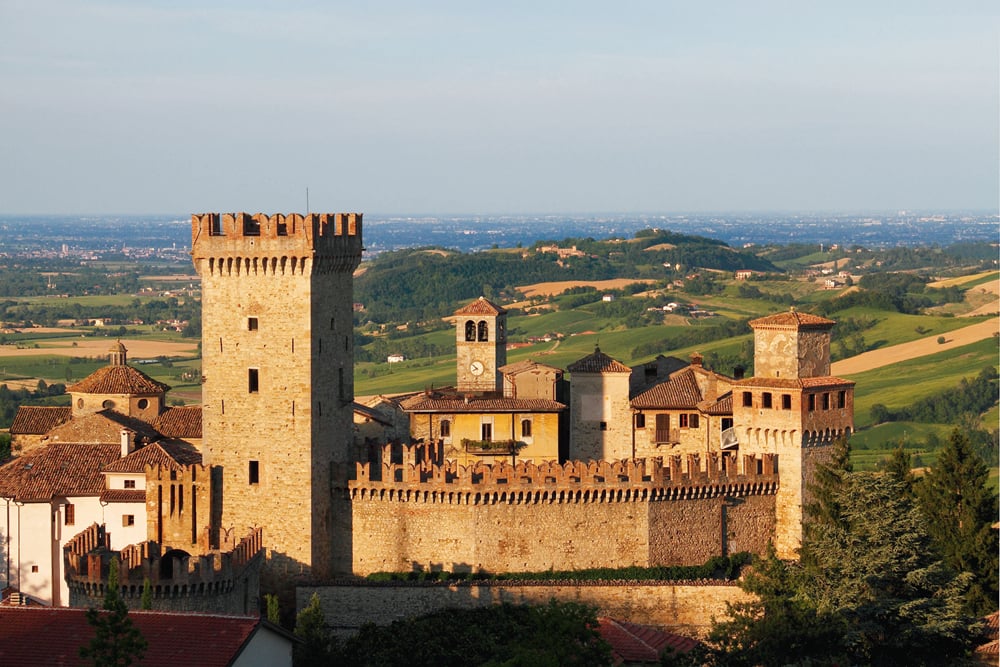
Not to be missed is the Museo degli Orsanti, a fascinating museum dedicated to the travelling entertainers who toured the Apennine villages in the 1700s and 1800s. These entertainers put on street shows with music and trained animals – such as monkeys, bears and camels – that they taught to stand on two legs, to the delight and amazement of their audiences.
Your visit begins at the only entrance, the main tower. On the right you’ll find the information office, where you can book a guided tour.
Once in the village, do not miss a visit to the Associazione del Vin Santo di Vigoleno. This association celebrates Vigoleno’s own Vin Santo, Italy’s smallest DOC wine. You can taste this unique liqueur wine and other local specialities in the castle’s tavern.
From Vigoleno, the route heads towards Vernasca, leaving the village behind and entering a picturesque landscape of oak woods. On the left you can see a valley dotted with vineyards and farmhouses.
Less than 2km further on, at the hamlet of Groppo, turn right and begin the descent through the vineyards. When you reach the Franchini area, take the SP12, which crosses the Val d’Ongina and takes you straight to Vernasca. Turn left towards Vernasca and continue.
Note: We’re now in the Piacenziano Geological Reserve, an ideal area for those who enjoy walking and exploring on foot.
Vernasca
At an altitude of 600 metres, Vernasca overlooks the Ongina and Arda valleys. We park our campervan in the designated area on Via Roma, right in the heart of the village.
Strolling through the centre, it’s clear that Vernasca was once a medieval fortress, although little remains of it today. The castle has largely been lost to time, and only the bell tower of the Pieve di San Colombano and the old presbytery remain. The rectory now houses the Provincial Visitor Centre for the Via Francigena, with frescoes on the upper floor. Vernasca is in fact situated on a section of the Via Francigena that runs from Piacenza to Rome.
Vernasca, panorama sul borgo dalla Pieve di San Colombano Ph. Parma1983 via wikipedia CC BY-SA 4.0
Vernasca, Pieve di San Colombano Ph. Parma1983 via wikipedia CC BY-SA 4.0
Vernasca is known not only for its excellent wines but also for its vibrant festivals, including Cantamaggio and Bascherdeis, held on the last weekend of July. Bascherdeis, in particular, attracts street performers from around the world, drawing thousands of visitors over three days of festivities.
Continuing our journey, we head toward Lugagnano and then on to Castell’Arquato, just 10 km away. There, we park our camper at Parking Lot No. 4, a designated camper stop, ready to explore the next enchanting village on our route.
Castell'Arquato
The charm of Castell’Arquato is known far and wide. This stunning village (also one of the Borghi più belli d’Italia and a Bandiera Arancione site by the Touring Club) is a true gem. Both the lower and upper parts of the village have winding cobbled streets that lead up through the ancient walls to Piazza Alta, offering an unforgettable journey back in time.
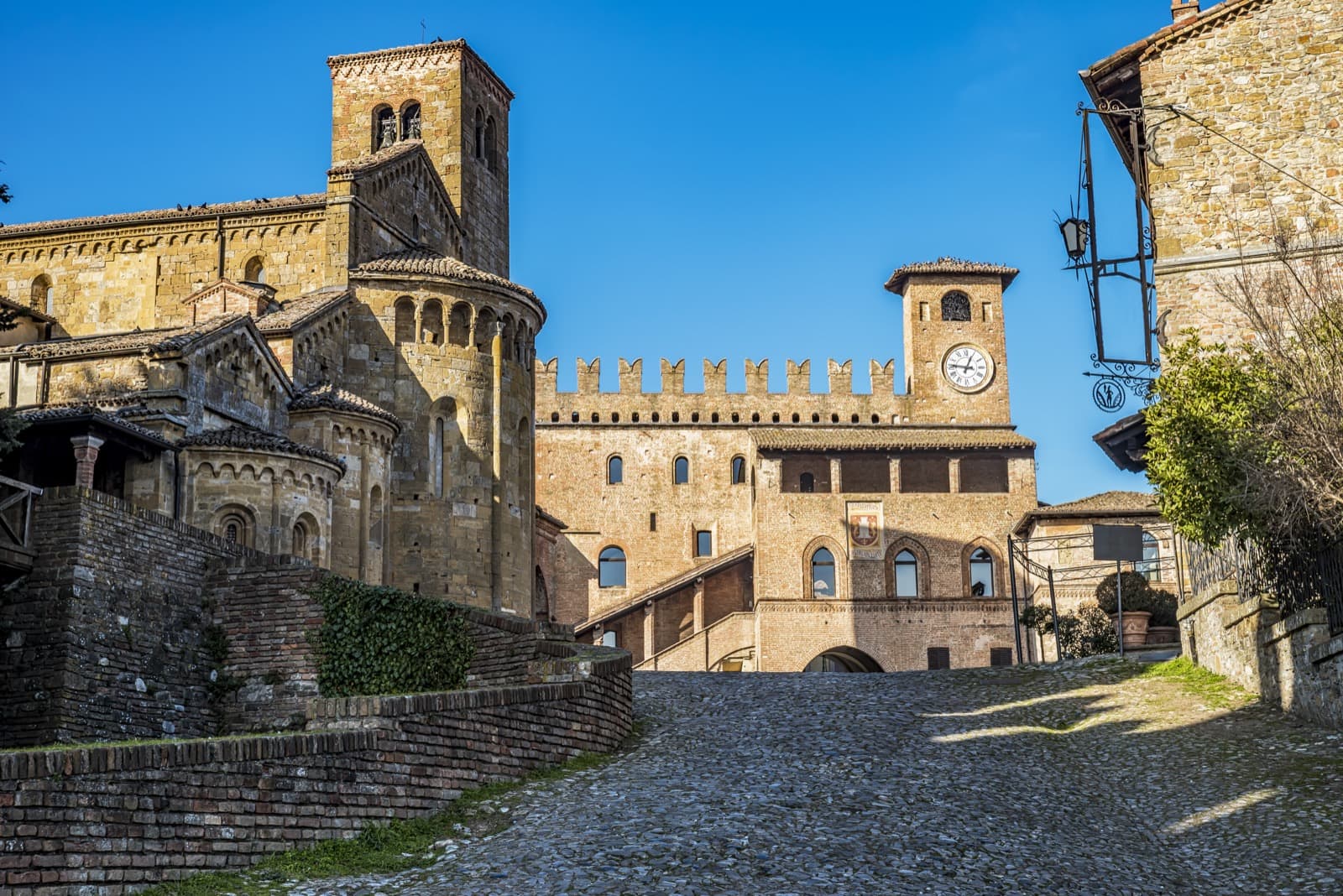
There are many cultural treasures to be discovered:
- The Romanesque church of Santa Maria Assunta and, through its enchanting cloister, the Collegiate Museum, which houses art and liturgical artefacts from the Val d’Arda;
- The Rocca Viscontea, where you can climb the 42-metre high keep to learn about ancient defence techniques and enjoy a panoramic view of the surrounding countryside;
- The Giuseppe Cortesi Geological Museum, which takes you back three million years to when the Po Valley was covered by the sea;
- The Luigi Illica Museum, which offers an insight into the Italian musical culture of the late 1800s.
The beautiful building in the square is the Palazzo del Podestà, which houses both the Town Hall and the Tourist Office.
It’s lovely to take a break outdoors and soak up the view of the square – just keep an eye out for any feathered friends flying by! Joking aside, we’re in the Val d’Arda, a region famous for its wines, such as Gutturnio, Ortrugo and Monterosso Val d’Arda. Every year at the end of April, the Monterosso Val d’Arda Festival celebrates these fine local wines.
Castelnuovo Fogliani
We continue our caravan itinerary with a few more stops. We take the SP4 and then the SP31, following the signs for Salsomaggiore, which takes us 11km to Castelnuovo Fogliani.
This castle, part of the Castelli del Ducato route since 2015, has a rich but somewhat fragmentary history. The earliest records date back to 1100, suggesting a long and eventful past. The castle isn’t always open to the public, but during the summer there are free guided tours by appointment.
Leaving this fascinating site, stay on the SP31 until you reach the Scipione Castello junction, where you follow the signs for Salsomaggiore/Fidenza. You’ll soon see the Pieve di San Nicomede on your left.
Here’s a tip: if you’re travelling at sunset, keep your camera handy – you’ll definitely want to capture the stunning views along this road!
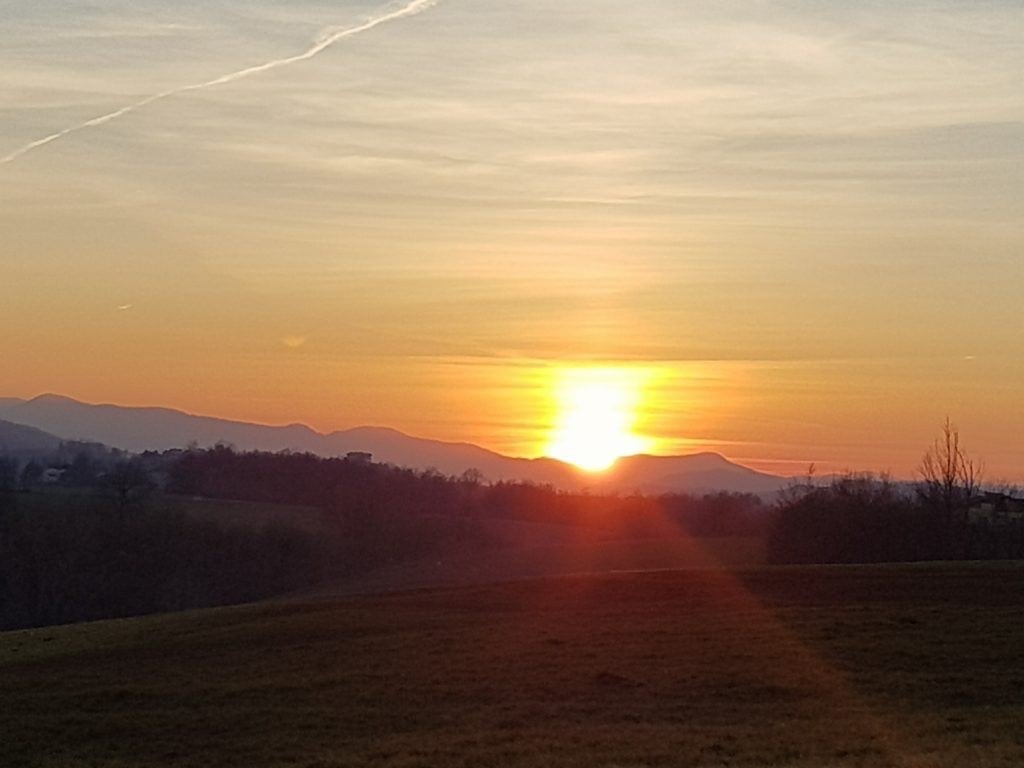
Pieve di San Nicomede
This suggested detour is well worth your time. The Pieve di San Nicomede, one of the oldest Romanesque churches in Emilia, dates back to the 9th century and was built in honour of Saint Nicomede, who was martyred in Rome in 85 AD.
According to local tradition, the church was built over a spring long believed to have healing powers. Pilgrims travelling along the Via Francigena would stop here, often carrying a brick on their head, as legend has it that drinking the blessed water from the spring could cure headaches. In order to preserve this tradition, the Church suggested that the miraculous powers of the water were due to the presence of the bones of Saint Nicomedes, thus giving a Christian explanation to the ancient pagan well. Later, the church was built around the crypt of the well, with stones and bricks left by the pilgrims.
From the official website of the Pieve di San Nicomede
The church is situated in a slightly hidden area, with a beautiful view of the countryside and hills, giving it a peaceful and serene atmosphere. It’s not far from Stirone Park, where you can find a number of hiking and mountain-biking trails to explore this remarkable area.
From the Pieve di San Nicomede rejoin the SP09 and head back towards Vigoleno, which will serve as the base camp for our journey.
Our campervan itinerary covers a route of around 50km and can be set off from any of the stops we’ve highlighted. We have designed it for those who want to explore this region at a relaxed and leisurely pace, enjoying its rich culture and gastronomy – just the way we like it!
Author
You may also like
by In Camper Con Gusto ///
by In Camper Con Gusto ///
by In Camper Con Gusto ///

Interested in our newsletter?
Every first of the month, an email (in Italian) with selected contents and upcoming events.
The most beautiful Italian Villages in Emilia-Romagna
by Elisa Mazzini /// November 26, 2024
The “Orange Flag” Villages in Emilia-Romagna
by Elisa Mazzini /// December 10, 2024
